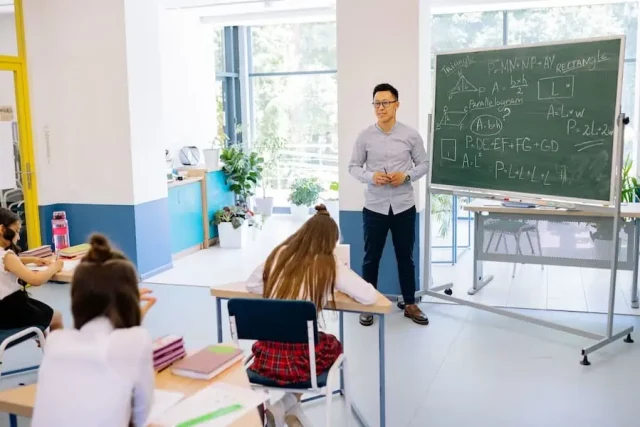Classroom design is an important part of creating an effective learning environment. The physical layout of a classroom can have a significant impact on how students learn, interact, and engage with the material. As educators, it’s important to understand the best strategies for designing a classroom that fosters creativity and encourages student engagement. In this article, we’ll explore some key concepts in classroom design and discuss several strategies for creating the ideal learning environment.
1. Get The Right Classroom Furniture
Classroom furniture plays an important role in creating the right learning environment. It can provide students with a comfortable and organized space to work, help keep them focused and on task, and even encourage group collaboration. When selecting classroom furniture, it’s important to consider the size of your classroom and the types of activities you plan to do there. For example, if you have a smaller room, look for pieces that are compact but still offer adequate storage space. You can find plastic-seat school chairs, desks with fold-down surfaces, and stackable tables that can be moved around as needed. Additionally, think about what types of activities will be taking place in the classroom when choosing furniture — you may opt for desks with adjustable heights for writing projects or couches or floor pillows for discussion and reading groups.
2. Keep Things Organized
Organization is key when it comes to creating an effective learning environment. Having a clear sense of where everything belongs and how it should be used can help keep students focused and engaged. To make sure your classroom stays neat and tidy, assign each student their own desk or chair as well as specific storage space for textbooks, notebooks, pencils, etc. It’s also helpful to provide separate areas for workstations like computers or other technology devices to avoid clutter in the center of the room. Additionally, use color coding or labeling systems so that students know exactly what goes where at all times.
3. Incorporate Visuals Into The Design
Incorporating visuals into the classroom design can be a great way to make the space more inviting and engaging. Posters, charts, and graphics can be used to illustrate key concepts and provide visual cues to help students understand complex topics. You can also create fun bulletin boards with student work or inspirational quotes to motivate them and add a bit of personality to the room. Adding some greenery or plants into the classroom is a great way to promote relaxation and give students an element of nature in their learning environment. The possibilities are endless, so get creative and have some fun!
4. Consider Acoustics
Classroom acoustics are just as important as physical design when it comes to creating an effective learning environment. Too much noise in a classroom can be distracting for both teachers and students alike, so it’s important to keep this in mind when arranging furniture and other items in the classroom. Soft furnishings like curtains or rugs can help absorb sound, while strategically placing bookshelves against walls can reduce noise levels significantly. Additionally, encourage students to keep their conversations at a reasonable volume or use headphones when listening to music during class time.
5. Make Use Of Technology
Technology can be a great tool for enhancing the learning experience and making classroom activities more engaging. Incorporating digital devices like tablets, laptops, and interactive whiteboards can help keep students engaged in their work and provide educators with new ways to present material. Educational apps and online resources can offer students opportunities to explore topics in-depth while giving teachers an effective way to track student progress. If you’re looking to create the ideal learning environment, integrating technology into your classroom design is an important step.
6. Allow For Flexibility
Flexibility is an important element in creating an effective learning environment. When arranging furniture and other items in the classroom, it’s important to allow for movement as well as reconfiguration of seating or workstations if needed. Additionally, it can be helpful to have various “zones” within the classroom that are dedicated to different activities like reading, writing, or group projects so that students can move around freely and focus on whatever task they need to complete. The more flexible the classroom, the easier it will be for teachers to create a variety of learning activities and scenarios that meet their students’ needs.
7. Promote Collaboration
Encouraging students to work together is an effective way to create a positive learning environment. Group activities and projects provide opportunities for students to learn from one another, practice communication skills, and develop problem-solving strategies. When designing your classroom layout, look for ways to make it conducive to group collaboration — arrange desks in circles or horseshoe shapes rather than rows and leave plenty of open space in the center of the room for activities that require movement. The more opportunities you provide for your students to work together, the more likely they are to form strong connections and build productive working relationships.
8. Make It Comfortable
Creating a comfortable classroom atmosphere is key for students to stay engaged and focused on their work. Look for ways to make the space inviting and cozy — add in elements like cushioned chairs, soft lighting, and plants or artwork. Consider offering students snacks or refreshments during class time as a way to encourage participation and give them an energy boost when needed. There are some ways to make your classroom more comfortable and enjoyable for everyone. It’s important to be mindful of the physical and psychological needs of your students when designing an effective learning environment.
By following these design strategies and selecting the right furniture for your classroom, you’ll be well on your way to creating an ideal learning environment that promotes creativity and engagement. With thoughtful planning and consideration of the needs of both teachers and students, you’ll be able to create a space that everyone is comfortable in — one where learning comes easily and naturally. So, don’t be afraid to get creative and try out some new furniture or layout ideas — chances are your students will thank you for it!














